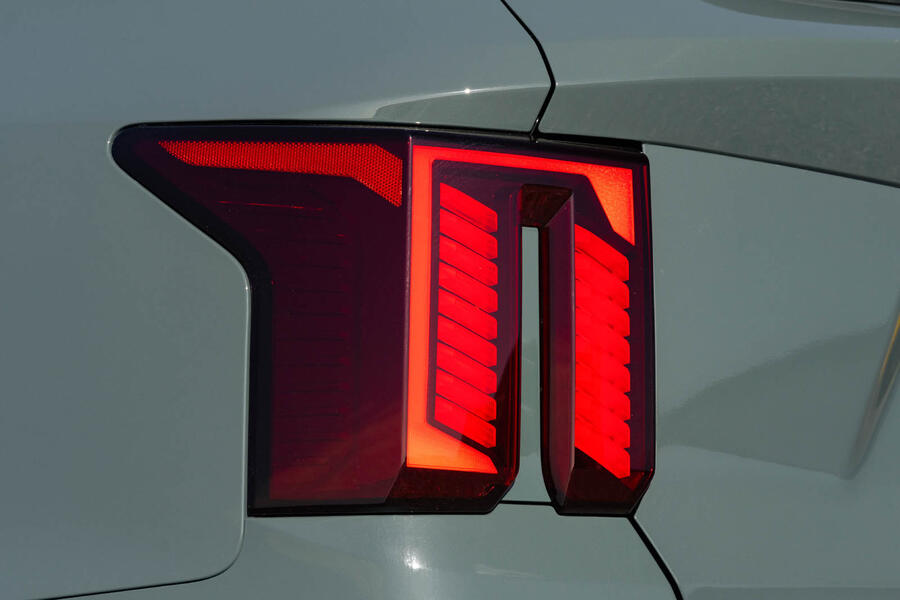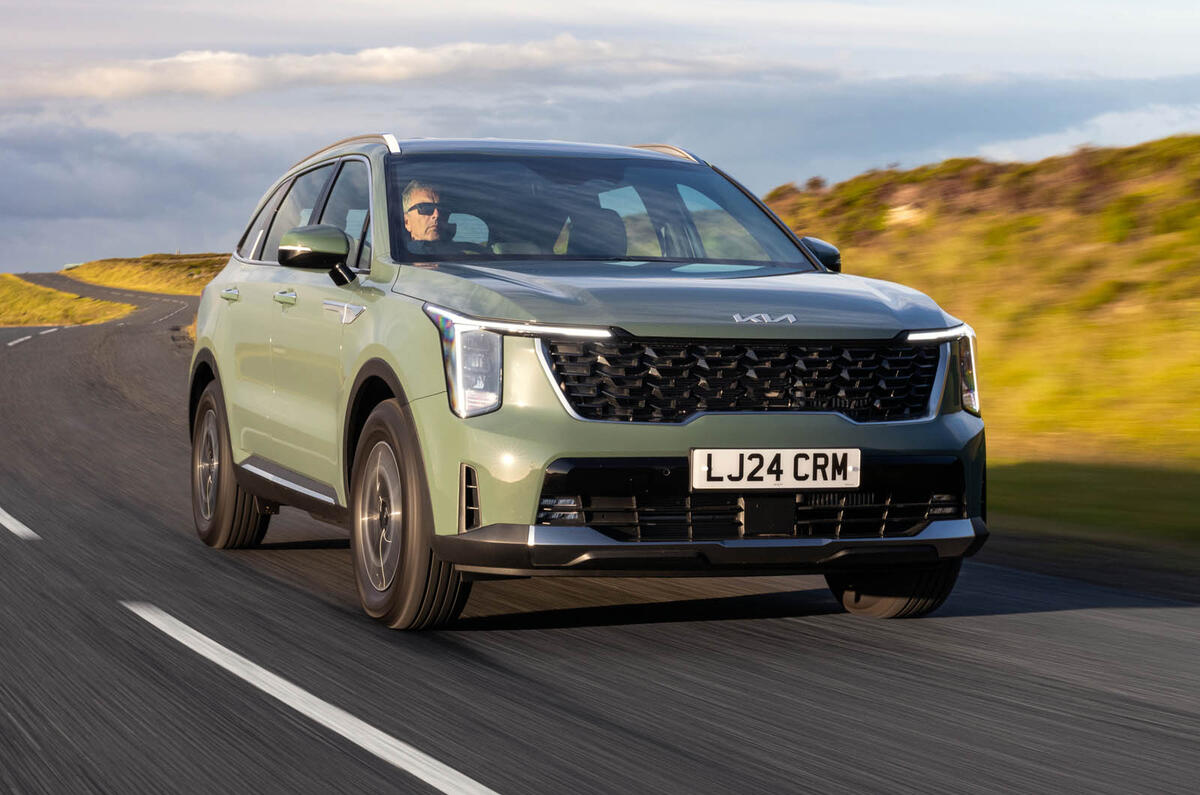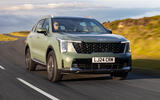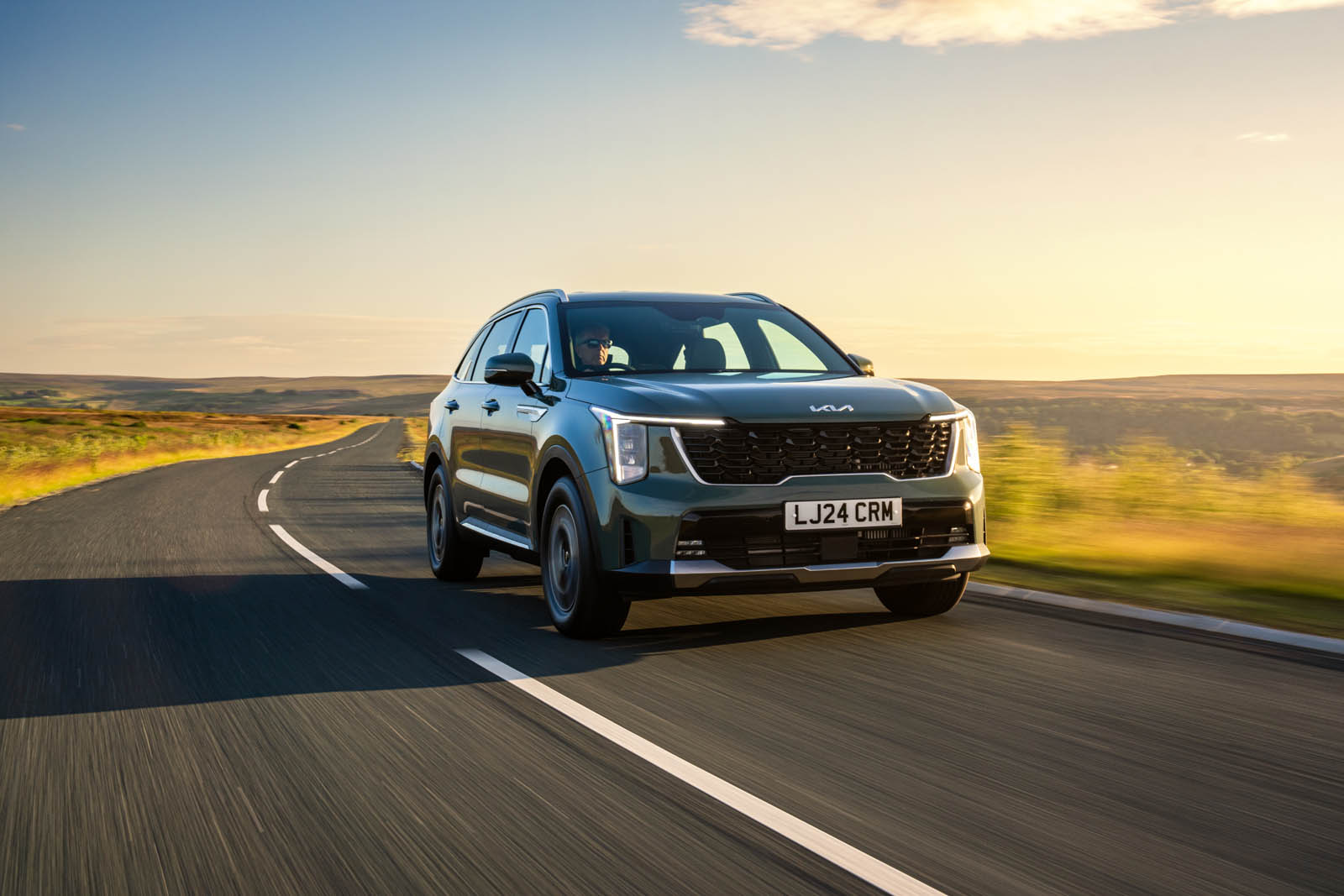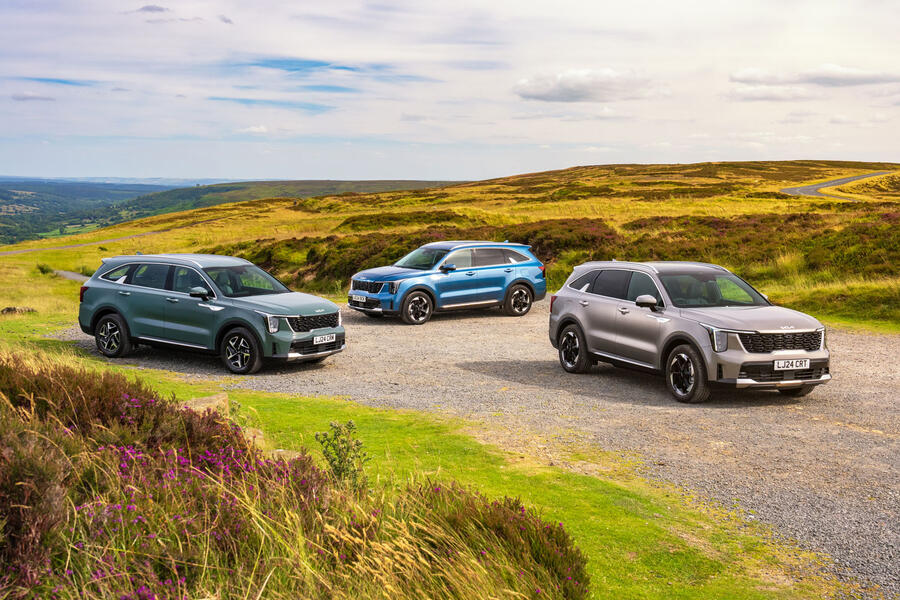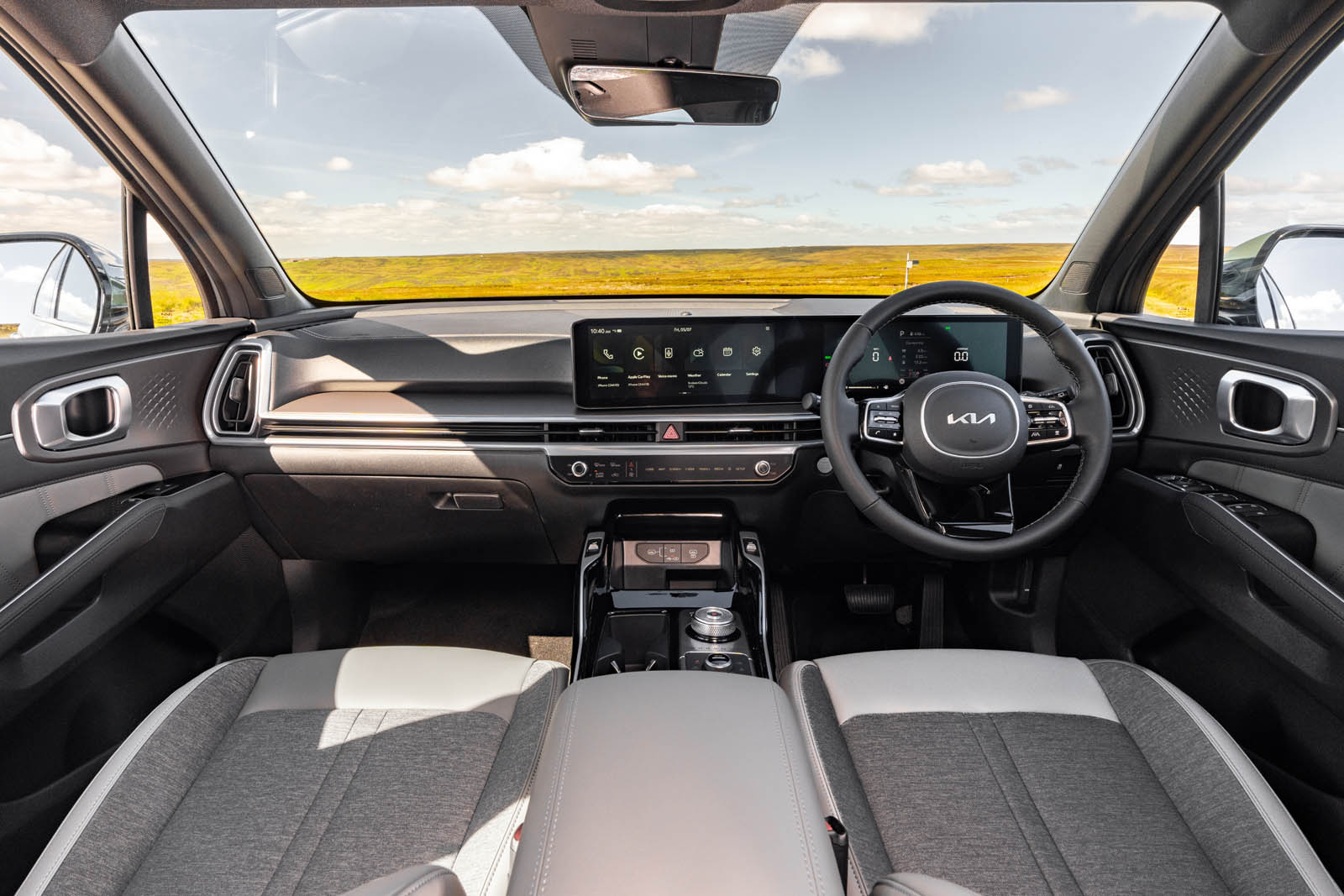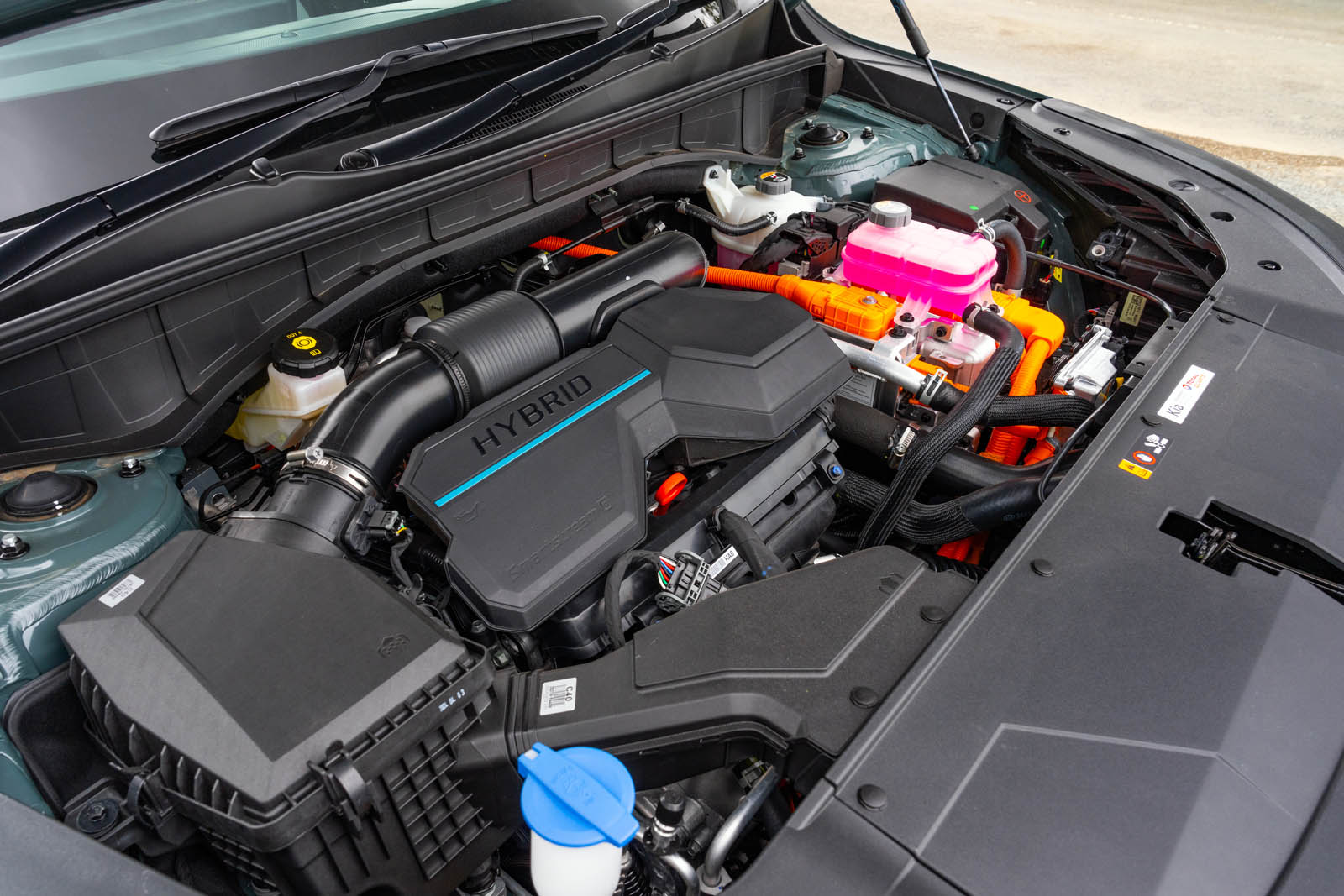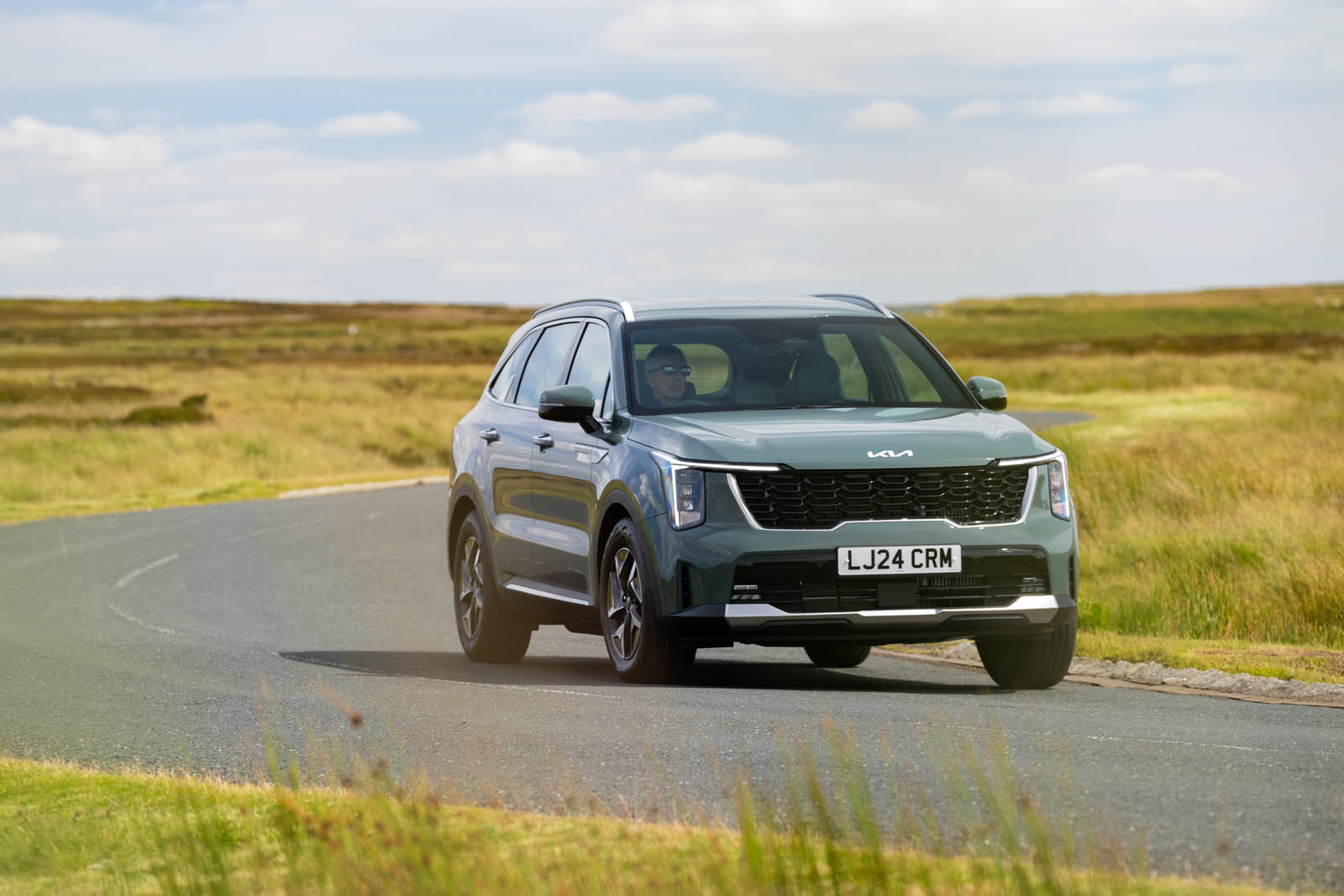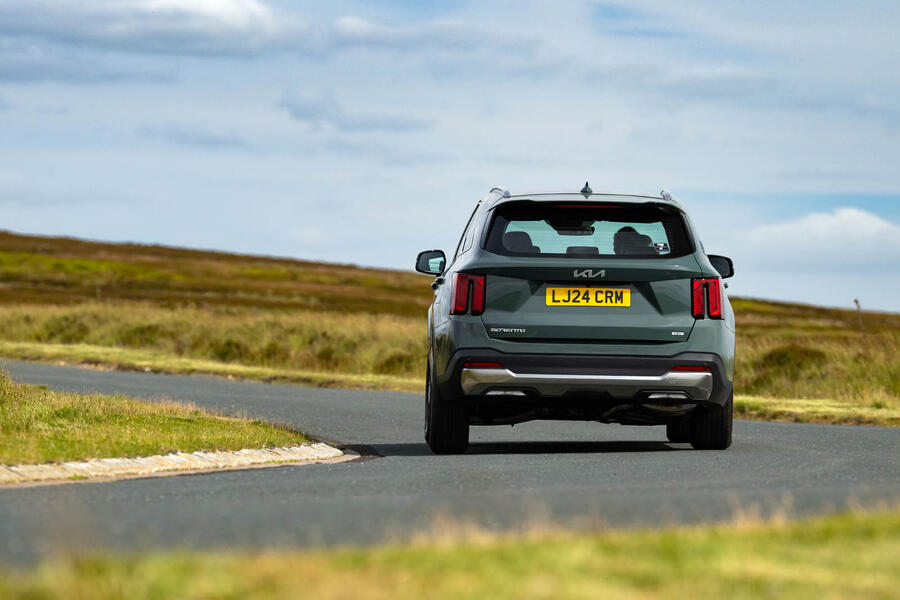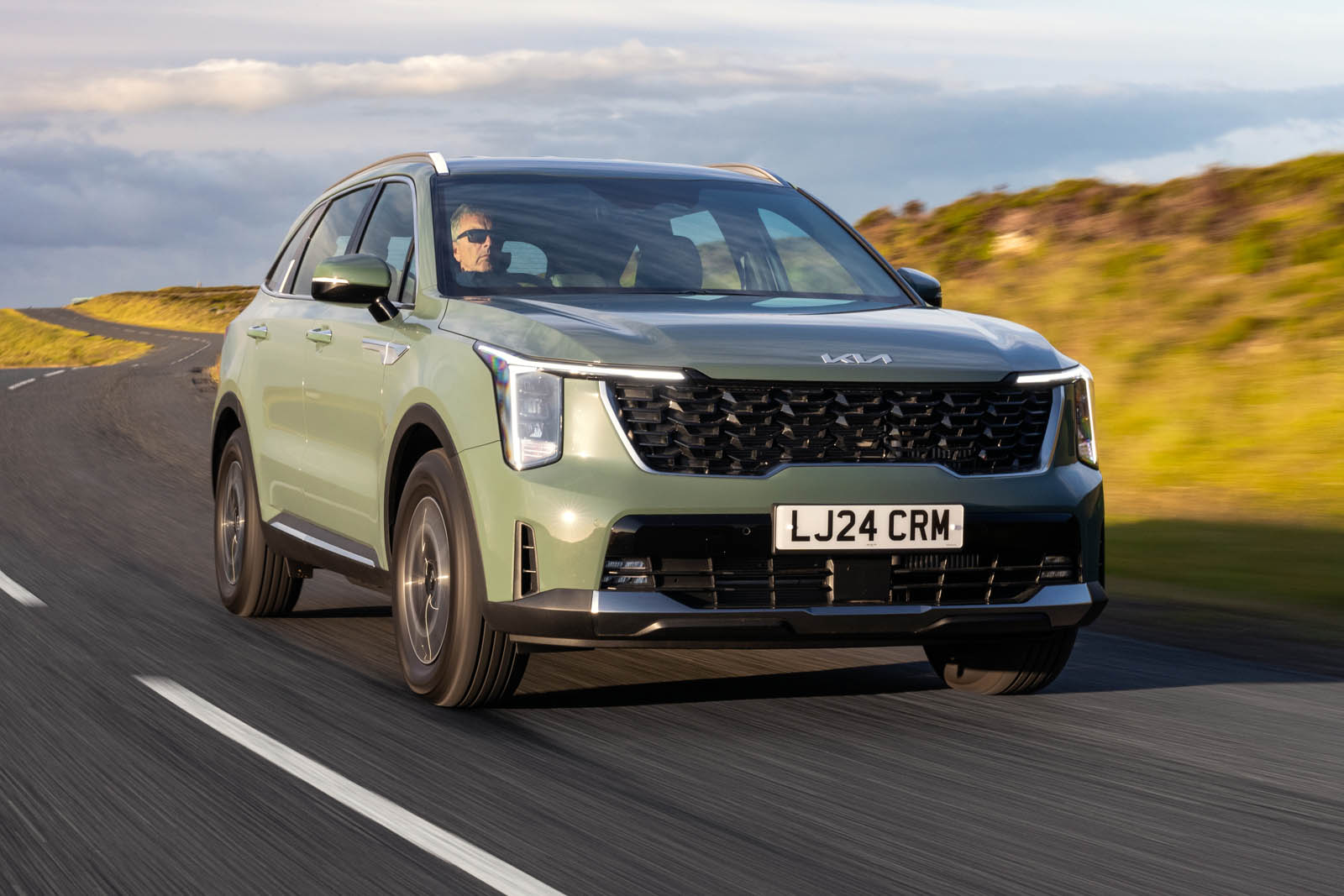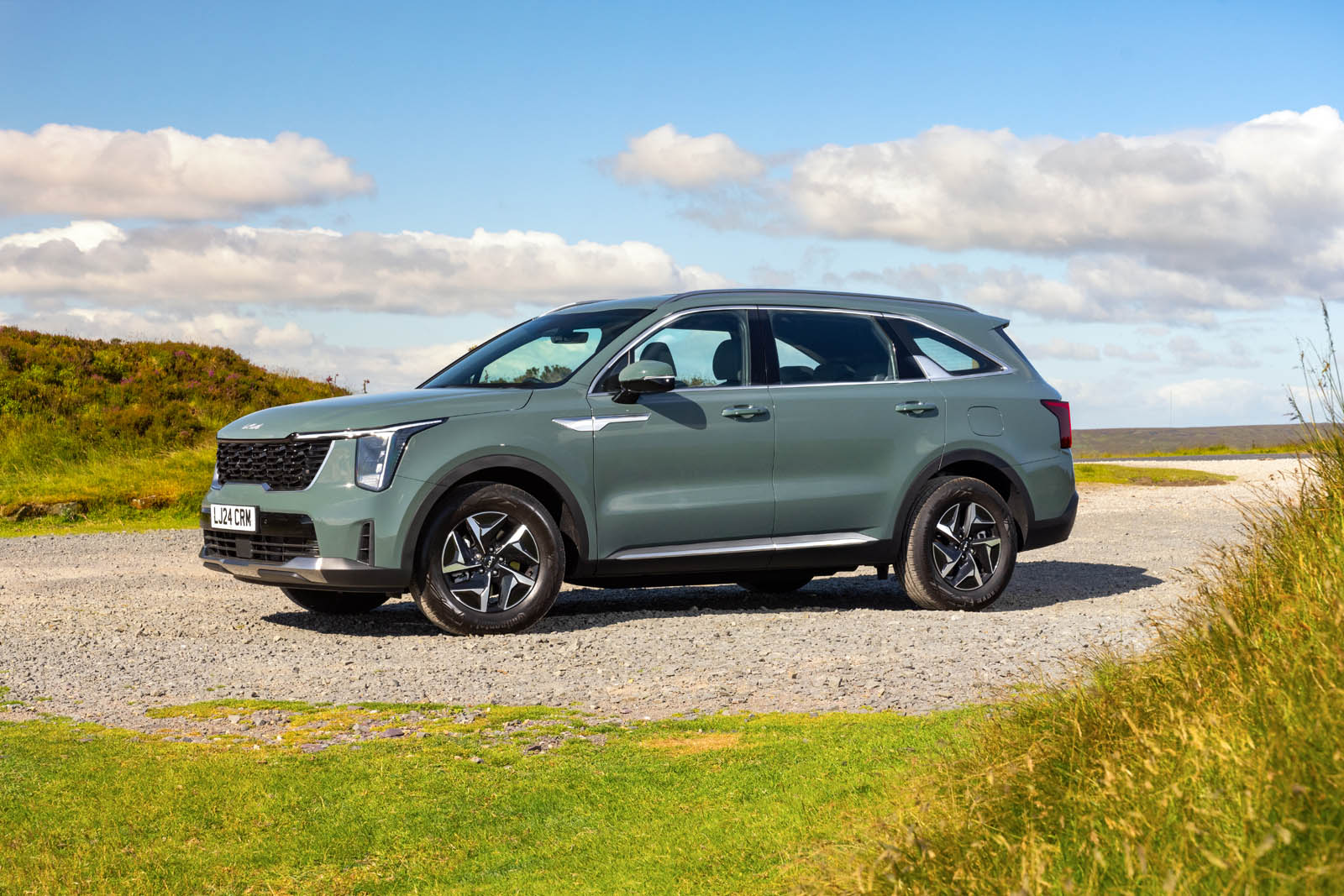Inserting 35mm in the Sorento’s wheelbase liberated yet more passenger space, and any concerns we had about head room in the outgoing model have been dispelled. Width is also unusually generous and such is the expanse between the driver and front-row passenger that the car feels distinctly American.
Large families will warm to the seven-seat Sorento especially quickly. One 6ft-tall passenger in the third row can just about sit directly behind another in the second row for short journeys, so kids should be fine, even for longer stretches. The third row also gets its own air vents with electric fan control.
The Kia offers considerable versatility, should you need it: the second row of seats can be slid fore and aft and can also recline, even if the 60:40 split doesn’t give you quite as much flexibility as it might with a 40:20:40 configuration. However, the Sorento does feature usefully ‘premium’ electric switches in the boot, which make the process of folding down the second-row seats hassle-free.

In design terms, where the old Sorento was doggedly conventional, this reinterpretation feels much more modern, although it does more to superficially mimic premium brands than actually recreate what they offer. The broad digital displays and prominent air vents are Mercedes-Benz-esque, while the textured ‘metal’ is very Audi.
Possibly the biggest change for the 2024 facelift has come on the inside. The chunky centre stack of the outgoing car has been ditched for a sleeker but less distinctive curved screen that incorporates the infotainment and gauge cluster, while underneath is a touch bar that can be switched between climate controls and infotainment shortcuts, like on the EV6 and Sportage.
Entry-level 2 grade also swaps the old black and grey cloth seats for a lighter fabric-leatherette combo, both of which are made from recycled plastic. It makes the Sorento’s cabin nice and airy but does give off a bit of that unpleasant vinyl smell.
Kia Sorento infotainment and sat-nav
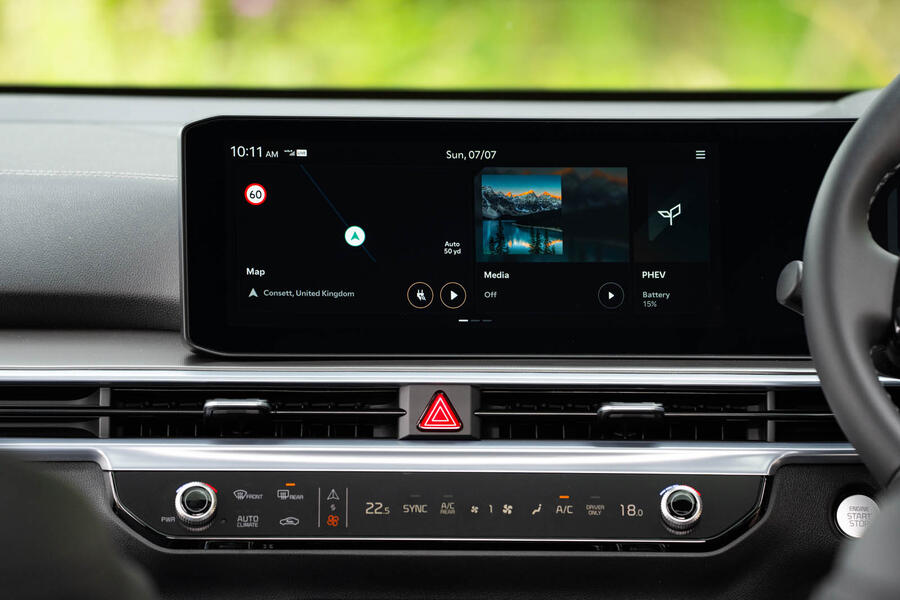
A revamped infotainment system rounds off the facelift changes. On the original version, 2 trim got a smaller screen, but from 2024, all versions have the same wide curved screen with updated software.
The interface works quickly and mostly intuitive, with most functions easy to find. It helps that the climate controls are not in the screen, but the switchable touch bar is not a perfect solution either because you can bet that when you want to use one of the infotainment shortcuts, you will have left it in climate control mode.
Apple CarPlay and Android Auto have always been standard on this generation of Sorento, but it took Kia until 2024 to add wireless functionality. There’s a wireless phone charger from 3 grade upwards, but the car has a generous provision of USB ports in any case.
